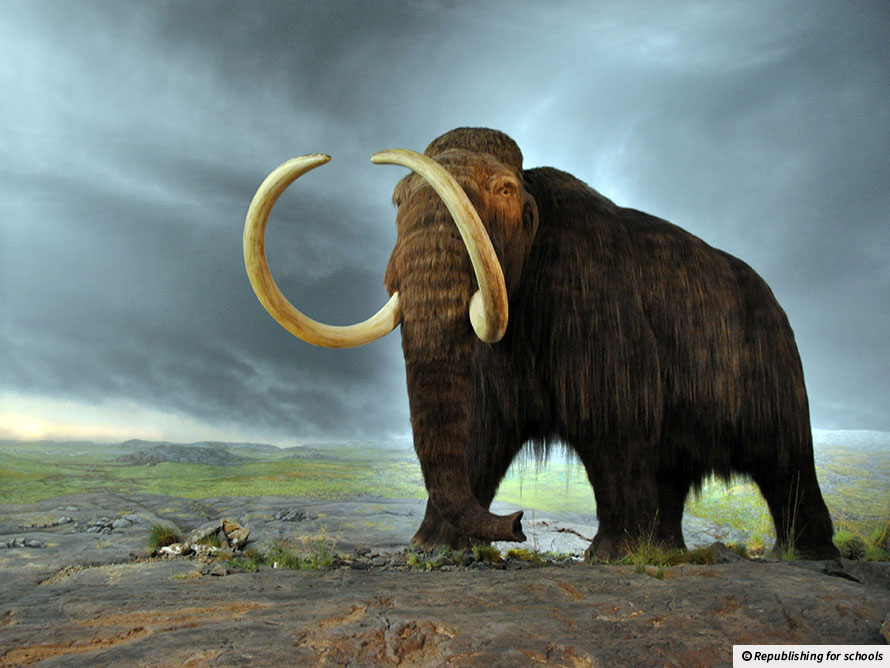Could this reshape history? Scientists have managed to reconstruct a woolly mammoth’s life story and wanderings by examining her 14,000-year-old remains.
How Elma the mammoth left a diary in her tusk
 Fully woolly: The largest mammoths were over 11ft tall and weighed up to nine tons.
Fully woolly: The largest mammoths were over 11ft tall and weighed up to nine tons. Glossary
Alaska - A US state in the extreme northwest of the continent of North America. It is separated from the rest of the USA by Canada.
Woolly mammoth - Its closest living relative is the Asian elephant. The last population lived on Wrangel Island in the Arctic Ocean.
Ice age - A long period of time in which global temperatures are extremely cold.
Remote - Far away from places where humans live.
Extinction - Completely dying out.
Bog - An area of wet, muddy ground.
